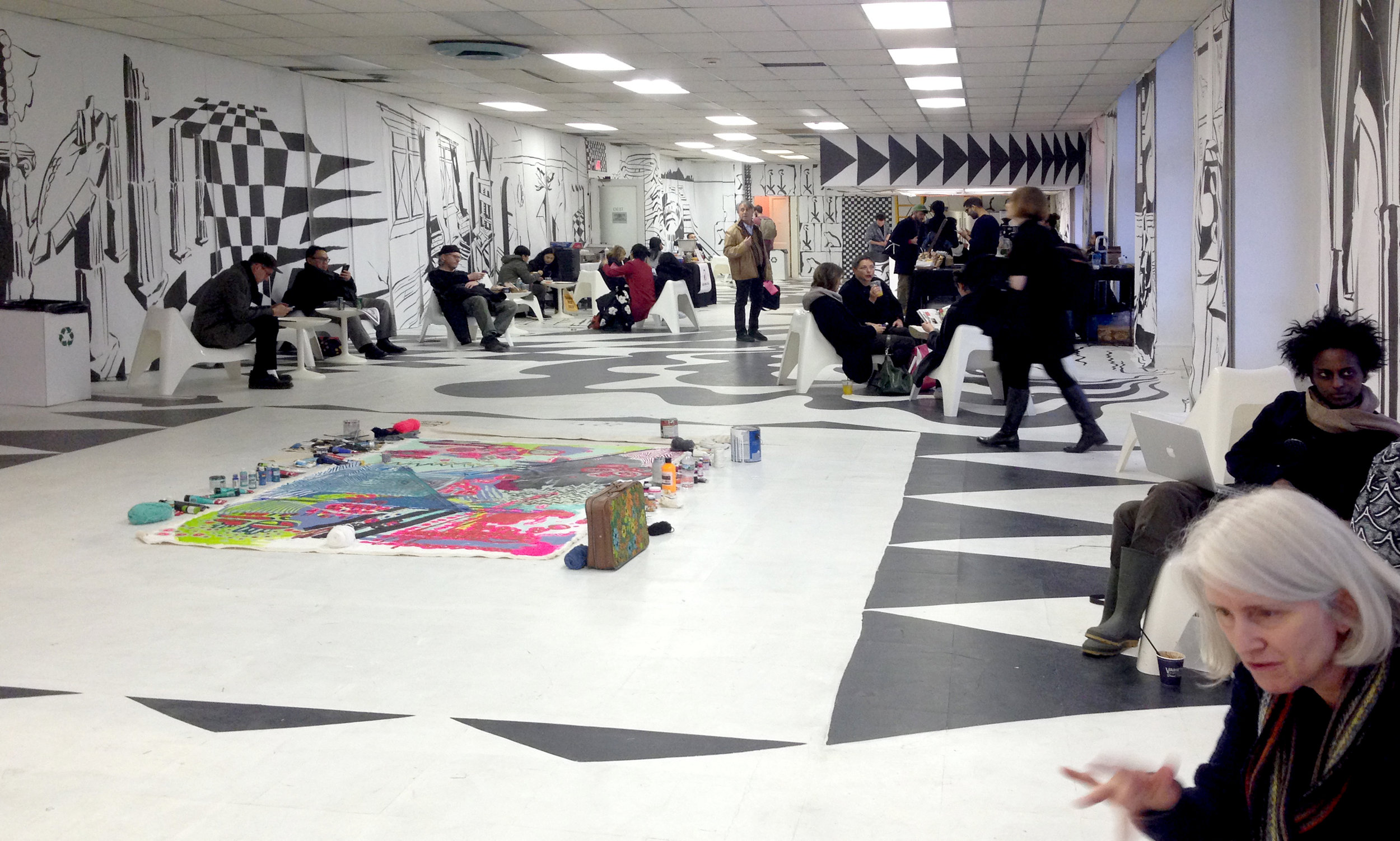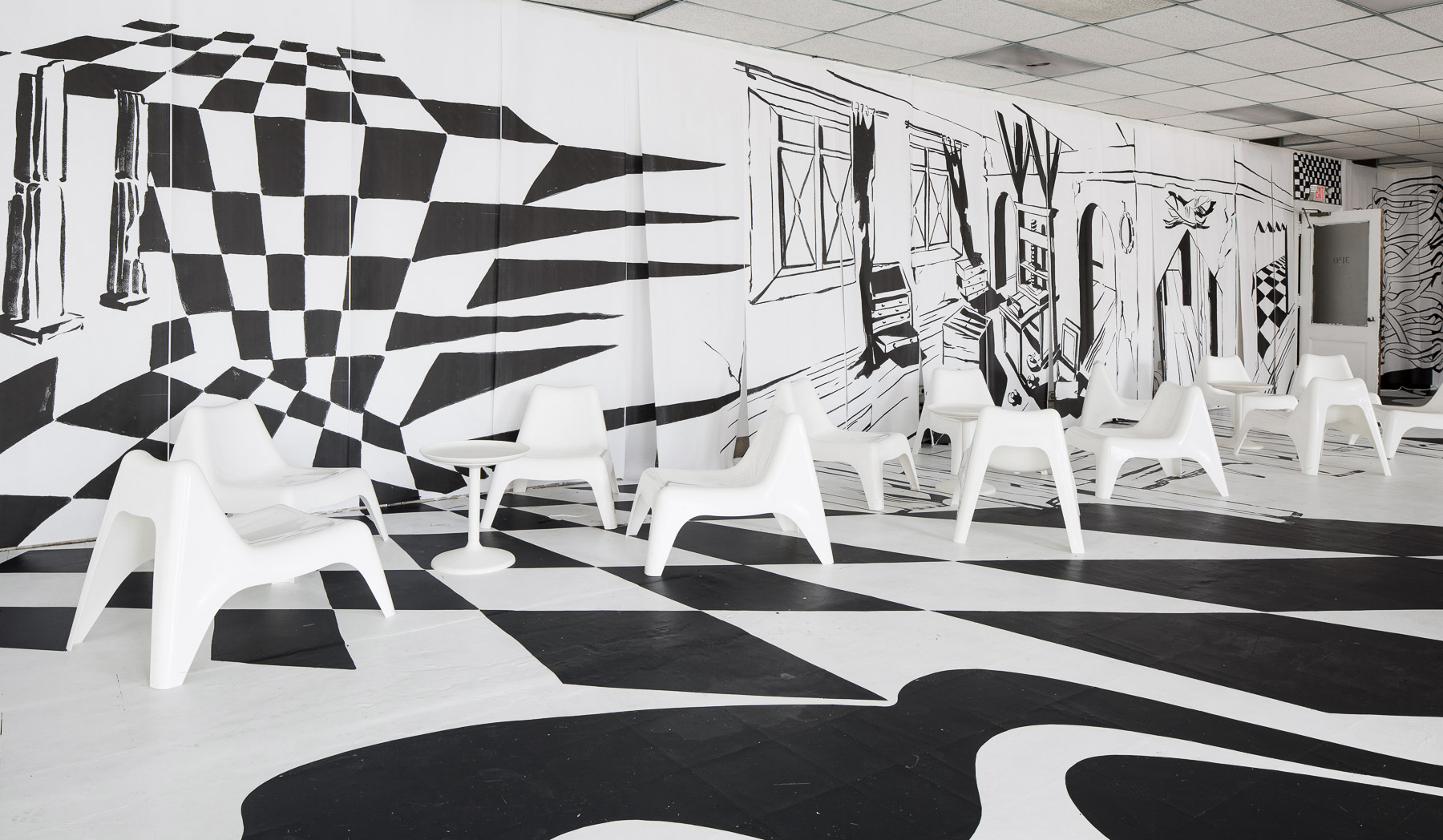Installation commissioned by Spring/Break Art Show - COPYPASTE, 2016.
SKENOGRAPHIA: For the purpose of painting theatre backdrops, the Greeks in the 5th century BC made the first known attempt at constructing a system of perspective.
THE GUTENBERG PRESS: After Gutenberg produced his Bible, one of his creditors, Johann Fust, took him to court for his unpaid debts. Gutenberg lost everything. However, under Fust, his press continued to publish. It wasn't until the age of 67 that Gutenberg received credit for his invention. He died at 70, in 1468.
In 1962, Canadian communication theorist, Marshall McLuhan, published The Gutenberg Galaxy. Here, McLuhan argues for a connection between the development of linear perspective and mass produced texts. He sees both as contributing to the dominance of a homogenous, unified perspective of the world, with an emphasis on rationality, logic and the visual.
REVERSE PERSPECTIVE: Before geometrical and mathematical proofs were established for linear perspective, there was reverse perspective, inverted perspective or divergent perspective. This is when objects that are closest to the viewer are depicted as being smaller than objects farther away. Not a lot is known about this phenomenon, however some stipulate that religiously significant bodies were painted conforming to a vanishing point in the heavens rather than on the earth's horizon. Reverse perspective is commonly seen in Byzantine and Russian Orthodox icons prior to the Renaissance.
CHECKERBOARD FLOORS: As knowledge spread of linear perspective, there was an influx of checkerboard floors in religious paintings - particularly in the mangers where the birth of Christ was depicted.
CONVEX MIRRORS, RELIGIOUS RELICS: To fund his money making project - the serial production of the Bible - Gutenberg manufactured convex mirrors. Every 7 years, in medieval Aachen, Germany, religious relics were put on display, drawing thousands of pilgrims to the city. Although not every pilgrim could get close enough to view the relics, they could hold above their heads Gutenberg's mirrors, whereby the holy rays that emanated from the relics reflected down upon their faces. This plan foundered when the showing of the relics was cancelled due to an outbreak of the Black Death ie the Plague.
SKENOGRAPHIA: For the purpose of painting theatre backdrops, the Greeks in the 5th century BC made the first known attempt at constructing a system of perspective.
SPHERICAL MOVEABLE TYPE: Johannes Gutenberg (Ger.) invented a hand mould and matrix for mass-producing moveable type. This allowed for the relatively quick composition of a page of text. Gutenberg was a trained goldsmith where this process was common in the production of coins. By 1450 Gutenberg was actively mass publishing with the aid of this technology. In Europe, prior to this, a page of text was either carved into a single wood block or transcribed by hand. No such thing as spherical, moveable type exists.
MNEMONIC DEVICES: Prior to any form of mass media, mnemonic principles existed to aid people in remembering. These principles were used in the construction of memory maps and employed images, schematic graphics, shapes and text.
BROADSIDES: Broadsides/posters were the most prevalent form of printed media between the 16th and 19th centuries. Although a product of Gutenberg's invention, the broadside was later used by Martin Luther in 1546 to publicize his thoughts on church reform that would later instigate the Protestant Reformation.
Accompanying Legend to the installation











